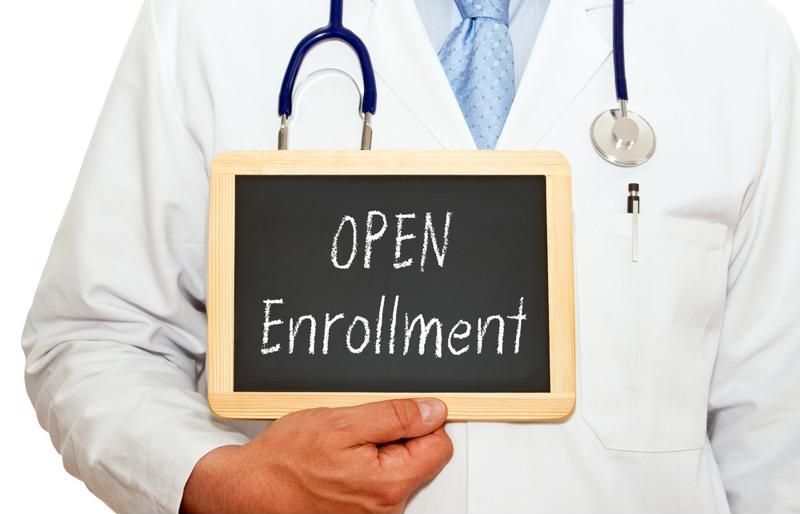
Since the end of your company's last open enrollment period, you've made it two-thirds of the way through your business's Q1, and without a doubt, you and your HR team have already had plenty on your plates. Chances are pretty high that you've got more than enough to deal with right now, in fact. But this doesn't mean that there isn't still some room for introspection and analysis regarding the success of your organization's health care sign-ups as mandated under the Patient Protection and Affordable Care Act.
In fact, an evaluation like this is critical. You need to fully understand how the open enrollment 2020 process went – for better or worse – to work toward a better enrollment cycle for the 2021 benefit year. And a big part of this analysis is examining the role your benefits broker played in the way open enrollment unfolded within the organization. Brokers will, one way or the other, have a lot of influence over the success or failure of this pivotal part of benefits administration.
How can you evaluate the most recent open enrollment?
The easy answer here is to start with the basics. Look at the most "nuts and bolts" key performance indicators of staff members' engagement with benefit registration efforts. The first of these is the number of workers who stayed enrolled in existing health insurance plans, those who made a change to their benefit selections and the number of abstentions from your benefit offerings (ongoing waivers as well as those waiving your health coverage for the first time). Compare these totals not only to whatever goals you had for this sign-up session but also the objectives HR set in the past several years and the final numbers of those years.

After that, it will be important to take a look at how members of your staff were involved with the various steps of open enrollment. The KPIs to examine in this category include (but aren't necessarily limited to):
- Adherence to open enrollment dates: the number of people who signed up on or immediately after Nov. 1, 2019 (the first day of open enrollment for the 2020 benefit year), as well as those who put their paperwork in closer to the middle of the six-week period and the people who either literally or figuratively waited until the last minute – i.e. on or around Dec. 15, 2019.
- Levels of engagement at informational sessions regarding any new and revamped 2020 coverage: how many employees attended them, approximate number of questions asked, number of successful sign-ups that immediately followed such meetings, etc.
- One-on-one engagement metrics: how many workers requested one-on-one meetings with members of the HR team and/or your benefits broker during the open enrollment time frame, as well as the number of employees who took advantage of HR's "office hours" (if you offered such doors-open periods, as many do).
- Number of people you had to "chase" for their open enrollment responses: what methods you used (in-person requests, emails, phone calls, instant messaging et. al.), which were most and least successful, how long it took to get their attention and so on.
Collecting all of this data and subsequently analyzing it will provide you with a reasonable portrait of your open enrollment in terms of what succeeded, what went wrong and what ended up somewhere in between those poles. From here, you must move on to evaluating how your benefits broker served you and your workers during this period.
Grading your benefits broker
You'd likely be hard-pressed to think of a time when health insurance wasn't a major priority for the average worker. That said, over the last decade (and continuing into this one), it has loomed larger than ever in people's lives, becoming a hot-button sociopolitical issue as well as a practical concern. Few people should know this better than benefits brokers, and, as such, it's fair for you to expect them to keep their fingers on the pulse of trends in the industry. This is a key criterion you can use to evaluate how your organization's broker served you during open enrollment:
For example, when they were working with you to select benefit offerings, did they introduce a wide range of plans that included newer options like FSAs and HSAs as well as old standbys, or did they stick to the classic portfolio of HMOs, PPOs and other conventional plans? Additionally, outside of the health care realm, did your broker suggest other benefit offerings that have been growing in popularity, like tuition reimbursement plans, pet insurance, alternative retirement accounts, wellness plans and identity theft protection? If they didn't at least suggest these possibilities to you, that's reasonable grounds to wonder how well they're serving you.
The Society for Human Resource Management identified several other critical points to consider when evaluating your benefits broker (and, by association, assessing their contribution to your open enrollment):
- Were they representing one carrier or several?
- How many organizations were they providing brokerage assistance to along with yours? Were there any conflicts of interest?
- Was the broker directly available to employees who had coverage questions?
- Was your broker helping you deal with compliance issues (ACA, HIPAA and so on)?
- Did they work with you to find an experienced provider of benefits automation technology?
If your assessment brings up any noteworthy negatives regarding your broker, it could be high time to start thinking about looking for another one.
Moving forward for better enrollment in the future
Throughout 2020 health insurance will be one of the defining issues of people's personal and professional lives. And beyond that, it's already become clear that comprehensive benefits as a whole are critically important for both attracting and retaining top talent for your organization.
Assessing your latest open enrollment period – and the contributions of your benefits broker to its success or failure – will illuminate what you should retain about your existing process and what adjustments will be necessary to avoid repeating any mistakes that were made. This evaluation can also point you toward new technologies or methods you should introduce to your enrollment procedures.
